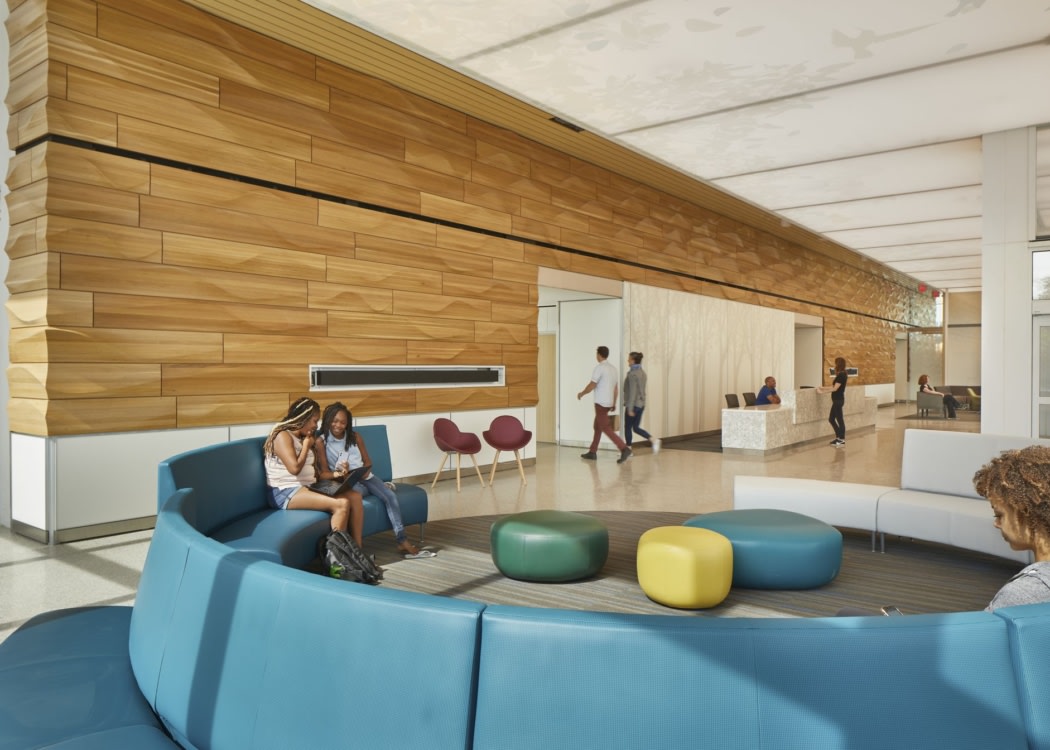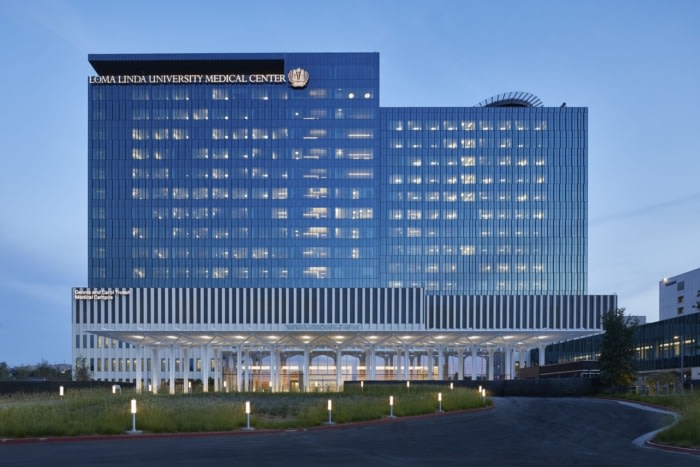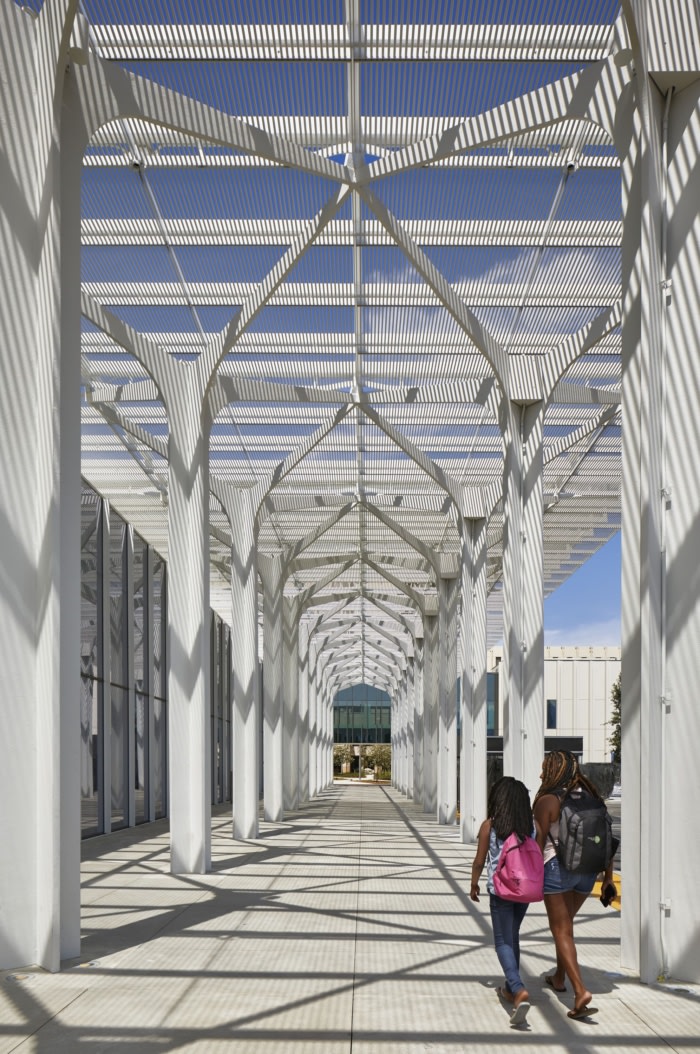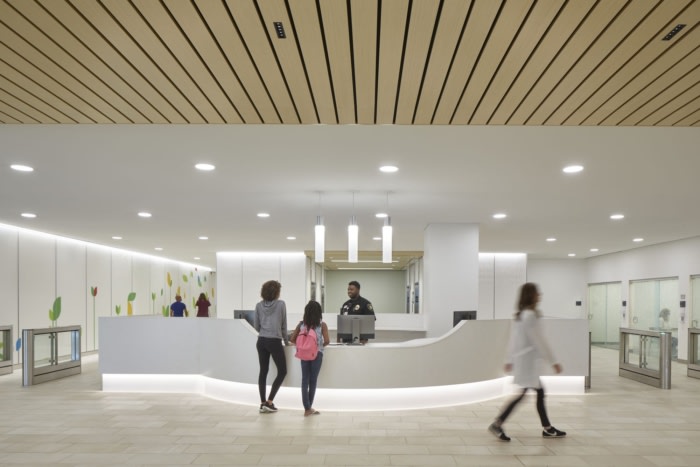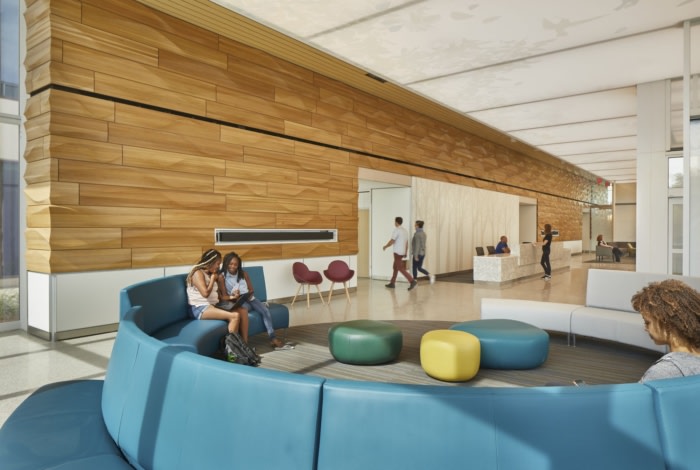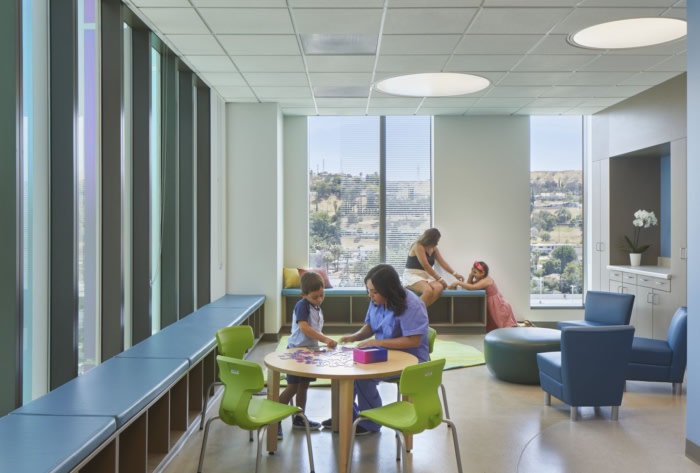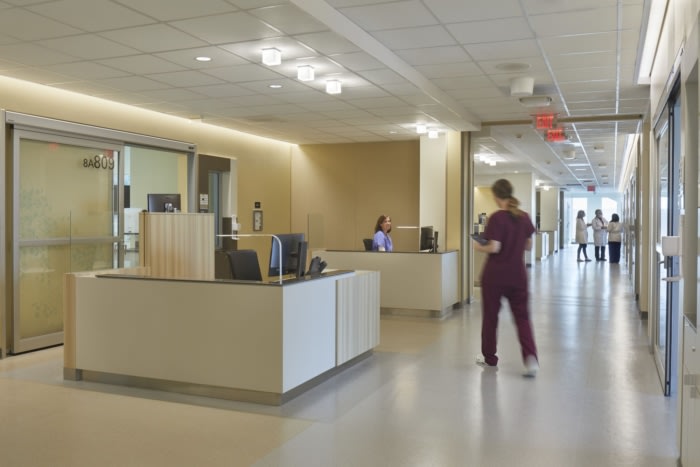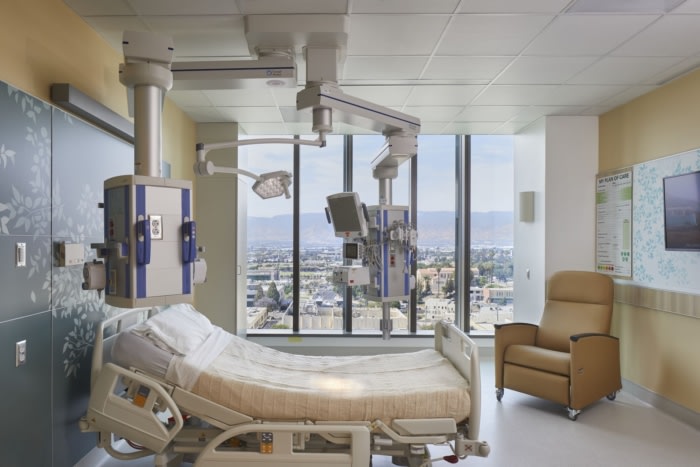Loma Linda University Medical Center – Dennis and Carol Troesh Medical Campus
NBBJ completed the Dennis and Carol Troesh Medical Campus for the Loma Linda University Medical Center in Loma Linda, California.
Today, hospitals need to respond to more uncertainty than ever before, from pandemics to the impacts of climate change. To better prepare for these events, Loma Linda University Medical Center is designed with resiliency in mind. Unlike the typical hospital, it can flex from low to high acuity to accommodate complex future scenarios from pandemics to mass casualty events—and features unique structural elements that help guard against earthquakes.
To enhance Loma Linda’s reputation as a faith-based Level One trauma academic medical center, the facility, a replacement hospital for adults and children, provides vital resources for the region. It reinforces the idea of “Whole Life Care” by integrating the healthy lifestyle teachings and mission of the Adventist organization. It also serves the only Blue Zone in the U.S., a designated region with a higher-than-average lifespan.
Putting Children at Ease
Today, hospitals need to respond to more uncertainty than ever before, from pandemics to the impacts of climate change. To better prepare for these events, Loma Linda University Medical Center is designed with resiliency in mind. Unlike the typical hospital, it can flex from low to high acuity to accommodate complex future scenarios from pandemics to mass casualty events—and features unique structural elements that help guard against earthquakes.Flexible Emergency Care
Dedicated emergency departments for adults and children are designed to flow seamlessly into one another and can be combined to function as a single unit, or one can be dedicated for triage and treatment of infectious patients.Resilient Design
The hospital is designed to move 42 inches in an earthquake. An innovative structural system with special expansion joints between buildings allows each to move independently during a seismic event. In addition, seismic dampening strategies include 126 base isolators that use triple friction pendulum bearings and fluid viscous dampers.
Design: NBBJ
Photography: Benjamin Benschneider

